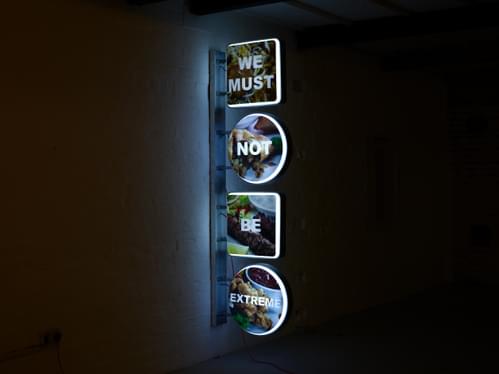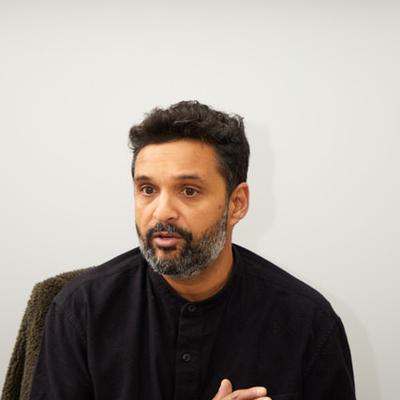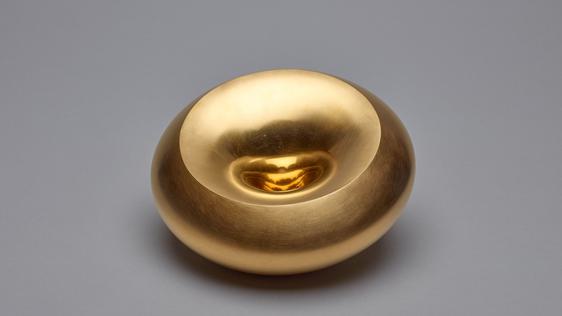News Story
Artist Faisal Hussain writes about his piece WE MUST NOT BE EXTREME, which has been bought for Birmingham’s collection with the support of the Public Picture Gallery Fund, Art Fund and the ACE/V&A Purchase Grant Fund.

As an artist I create work that questions perceptions, undermines lazy stereotypes and highlights missing histories and overlooked facts. Whether in music, in a gallery or in a sign outside a kebab shop, this cross-disciplinary practice is often presented in varied environments to engage with diverse audiences. Using archive and personal memory as starting points, this work explores the representation and understanding of South Asian culture and identity through the media, government, communities, and individuals.
I first used archive and signage to create pieces of public artwork called F.light in Birmingham. The work brought aspects of South Asian heritage and archive on to the British high street, placing them specifically at the locations of the very same family businesses and other public spaces.

Suspect Objects, Suspect Subjects was the next body of work, of which WE MUST NOT BE EXTREME is part. It was developed in London and Birmingham as social commentary on the climate of fear that followed the creation of the Counter-Terrorism and Security Act (2015) and its continuing enforcement and morphing over the years. This is a period marked by the importance of identity, the catalysing of racism, and the rise of Islamophobia in the UK, but also in Europe. More recently, my work has become informed by academic research in varied contexts and subjects and presented at conferences in France, Belgium, Germany and The Netherlands.
The artwork combines two common cliches of the migrant communities: its production of food with society’s fear of extremism. Crude commodification shines through these shops’ signs, and the media’s control over the identities of the community forces a mantra of innocence to be declared. From the fact that when most south Asian people moved to the UK, a majority set up businesses to survive, many due to the conditions of manufacture and industrial jobs which they started in. As food was one of the cultural and essential parts of who they were, restaurants and shops and trading was an important part of survival. This survival was on the high street and in different public places. It was where they introduced who they were to the UK and the populations of the UK. Shop signs which included new words and cultural references from the sub-continent such as halal, spices, and exotic with photos and images of what wares were available at your convenience. I wanted to juxtapose this history of trade and migration and introduction with statements to do with discussion and argument and portrayal. As the public space and civic spaces are where most of the terrorism takes place, the work makes the connection with the omnipresent and that a proclamation has to be made to negate any responsibility or implication with those that would carry such actions.
It is a privilege that the work has been acquired for Birmingham’s collection and of great personal resonance with me as someone who has been in the city for most of my life.
Suspect Objects, Suspect Subjects represents a response to racism at pivotal time of change for different institutions and British society over the last 10 years. The BBC, ITV, The Guardian, The National (UAE) and others have cited the work. A film of the work installed at SOAS University of London can also be seen on the Suspect Objects website.
Faisal Hussain, artist. www.faisalhussain.com.



